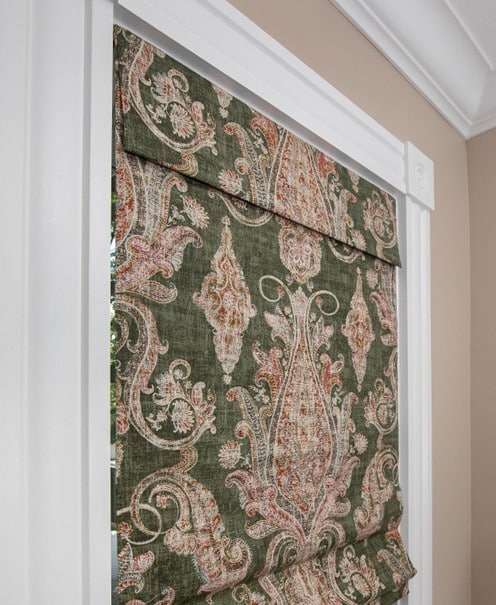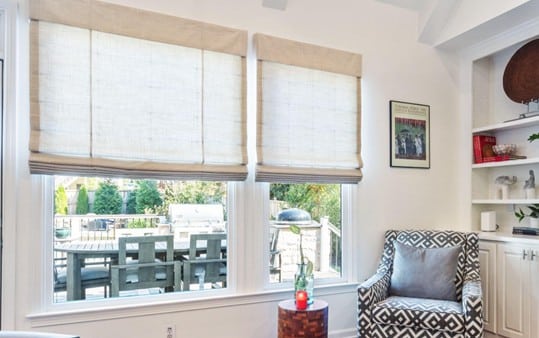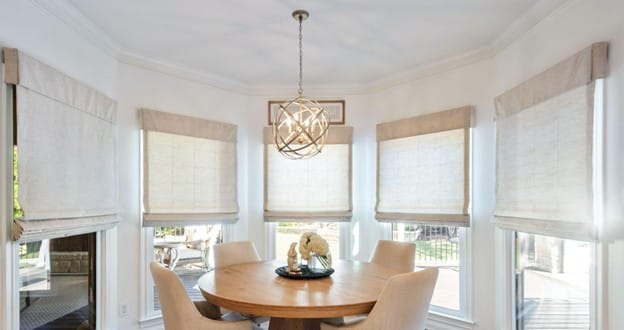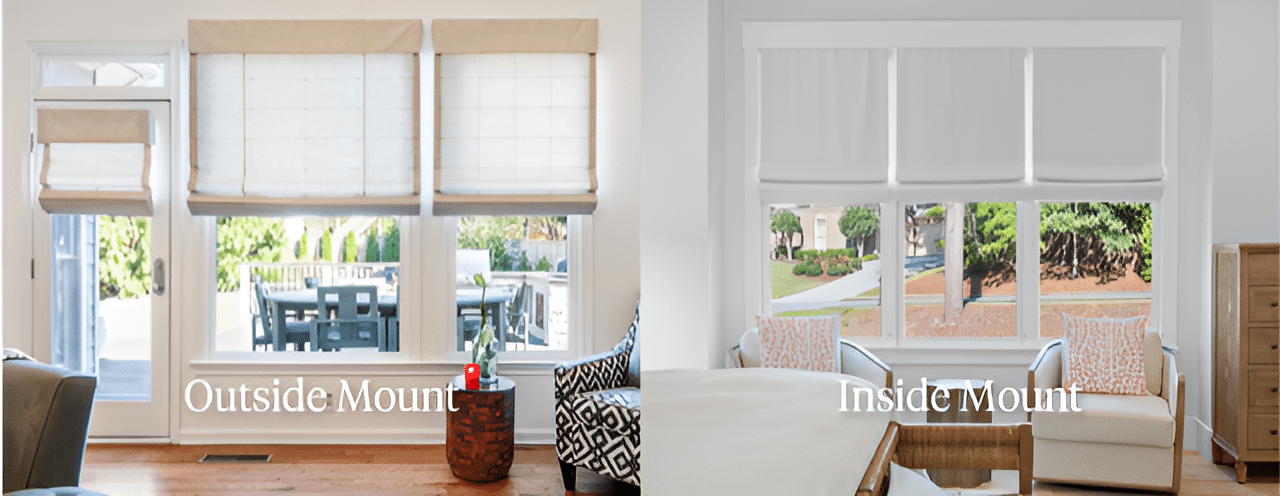Roman shades are a popular window treatment for good reason—combining the elegance of drapery with the tailored look of a shade, they offer timeless style and practical light control. But when it comes to installation, one key decision can impact the final look and functionality: inside mount vs. outside mount.
Here’s a breakdown of each option, how they differ, and the pros and cons to help you decide what’s best for your home.
Inside Mount Roman Shades
Inside-mounted Roman shades are installed within the window casing—the decorative molding or trim that surrounds the window—so the shade sits flush with the wall for a clean, built-in look. This style is ideal for modern or minimalist interiors and is perfect for showcasing decorative window casing, as it remains uncovered. Because the shade fits inside the opening, it takes up less visual space and helps smaller rooms feel more open. Inside mounts also pair well with curtains or drapery, as the shade won’t interfere with their function.

This inside-mount Roman shade fits snugly within the window casing of this historic Nashville dining room.
However, there are some trade-offs. Narrow gaps often appear between the shade and the sides of the window casing, allowing small slivers of light to filter through around the shade’s left and right sides. This isn’t a defect—it’s simply a result of how inside mount shades must be installed to ensure that they can be raised and lowered. These light gaps may be a concern in bedrooms or media rooms where blackout conditions are preferred.
While inside mount shades can be installed on most windows, a casing depth of at least 2 inches is ideal for the shade to sit flush. On shallower casings, the shade may project outward slightly, making the side gaps more noticeable. Inside mount is generally the more popular choice for windows with enough depth to achieve that seamless, recessed look.
Outside Mount Roman Shades
Outside-mounted Roman shades are installed on the wall or window trim outside the casing, allowing the shade to fully overlap the window opening. This style works well for shallow windows, older homes, or casings that are uneven or out of square. It’s often the preferred solution when an inside mount isn’t practical.

These outside-mount Roman shades elevate this living room by making the windows appear larger while adding a warm, inviting glow.
That said, outside mounts come with a few compromises. The shade’s hardware is more visible, and the overall look won’t be as flush or built-in as an inside mount. Outside-mounted shades also cover any trim or molding, which may be a downside if you want to highlight decorative details. Because these shades are typically installed to extend a few inches beyond the window casing, they block more direct light — but can still leave indirect light gaps from the left and right sides. Depending on the fabric and projection, they may also feel a bit bulkier in tight or narrow spaces.

These outside-mount Roman shades offer a clean, tailored look in this Atlanta customer’s breakfast room.
Both inside and outside mount Roman shades can be beautiful and functional—it all comes down to your space, design goals, and practical needs. If you’re unsure which to choose, a window treatment specialist can help you measure properly and determine what will work best for your home.
At Acadia Shutters, we offer free in-home consultations to help you choose with confidence.

